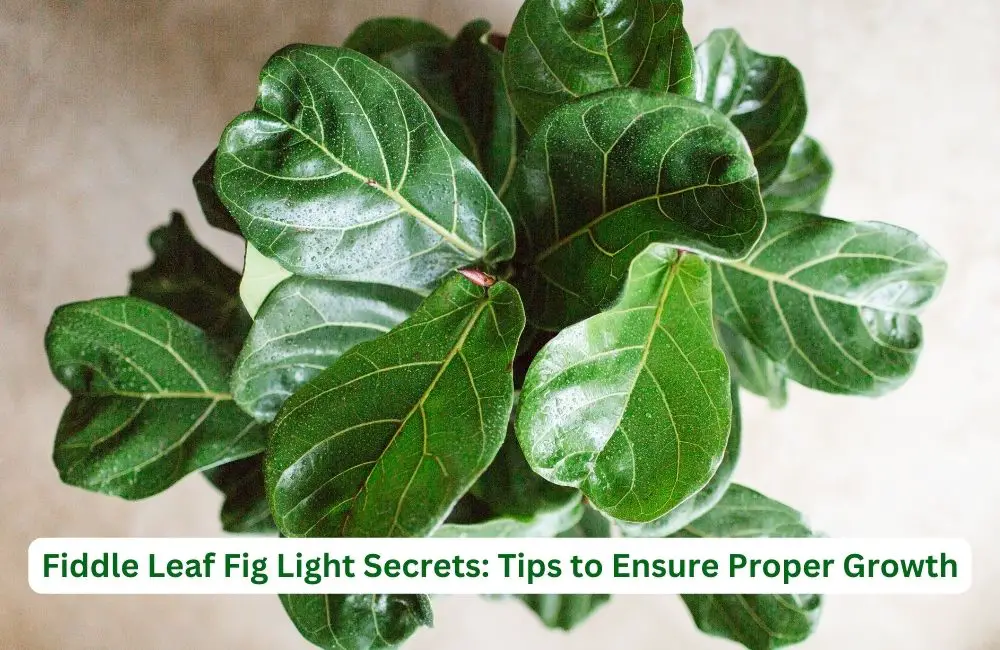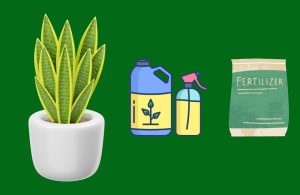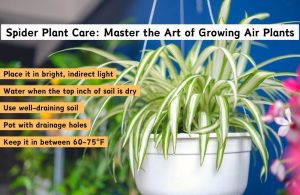This article covers the following areas –
- Light Requirements of Fiddle Leaf Figs
- 1. Choose the Ideal Spot
- 2. Rotate Regularly
- 3. Supplement Natural Light with Artificial Options
- 4. Recognize and Address Light Starvation
- 5. Adjust the Location with the Seasons
- 6. Prune for Optimal Light Absorption
- Final Words
In my journey as an indoor gardening enthusiast, the Fiddle Leaf Fig has always stood out as a captivating and somewhat challenging plant to nurture. Therefore, in this post, I’ll talk about the light requirements of this plant and share some effective tips to ensure it receives the proper light for optimal growth.
Fiddle Leaf Fig thrives in bright, indirect light. Optimal care involves positioning near a window with filtered sunlight, regular rotation for even growth, and supplementing with artificial light in low-light conditions. Pruning enhances light absorption, promoting robust health.
Keep reading to discover invaluable tips and techniques to ensure your Fiddle Leaf Fig survives and flourishes in your indoor space.
Light Requirements of Fiddle Leaf Figs
The Fiddle Leaf Fig, or Ficus lyrata, is native to the tropical climates of West Africa, where it basks in the warm, filtered light beneath the rainforest canopy. This origin story is pivotal to understanding its light preferences in an indoor setting.
These plants flourish in bright, indirect sunlight. Direct exposure, especially during peak hours, can lead to scorched leaves, while insufficient light may cause leaf drop and stunted growth. The key is to mimic the natural, dappled sunlight of their native habitat.
The best spot for a Fiddle Leaf Fig inside our homes is near an east or north-facing window. These orientations provide the soft morning light or gentle afternoon sun that these plants prefer. If your windows face south or west, using sheer curtains can help soften the intensity of the direct sunlight.
Are you still worried about ensuring the best light for your fiddle leaf fig? Worry not! Here are some tips to ensure the best practices for ensuring your plant gets just the right amount of light.
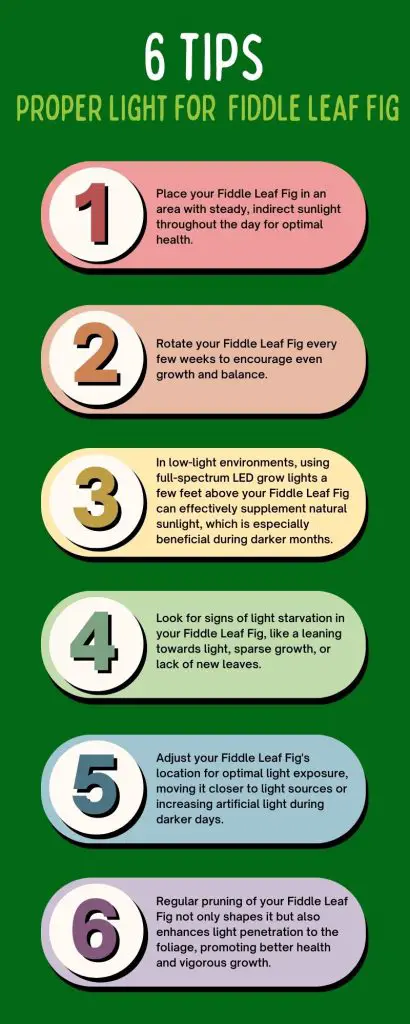
1. Choose the Ideal Spot
Place your Fiddle Leaf Fig in an area with steady, indirect sunlight throughout the day for optimal health. Avoid locations with harsh direct sunlight or overly dark corners to prevent damage to the plant.

Finding the perfect location for your Fiddle Leaf Fig is key to ensuring its health and vitality. The goal is to replicate the dappled sunlight of its natural habitat. A spot near a window that receives indirect sunlight for most of the day is ideal. East or north-facing windows are generally best, as they provide bright light without the intense heat of direct afternoon sun.
It’s also important to consider the intensity of light throughout the year. During summer, when sunlight is more intense, you might need to move the plant a bit further from the window or use sheer curtains to filter the light. Conversely, positioning the plant closer to the window can be beneficial when winter daylight weakens.
2. Rotate Regularly
Rotate your Fiddle Leaf Fig every few weeks to encourage even growth and balance. This prevents the plant from leaning towards the light and ensures all sides receive equal exposure.
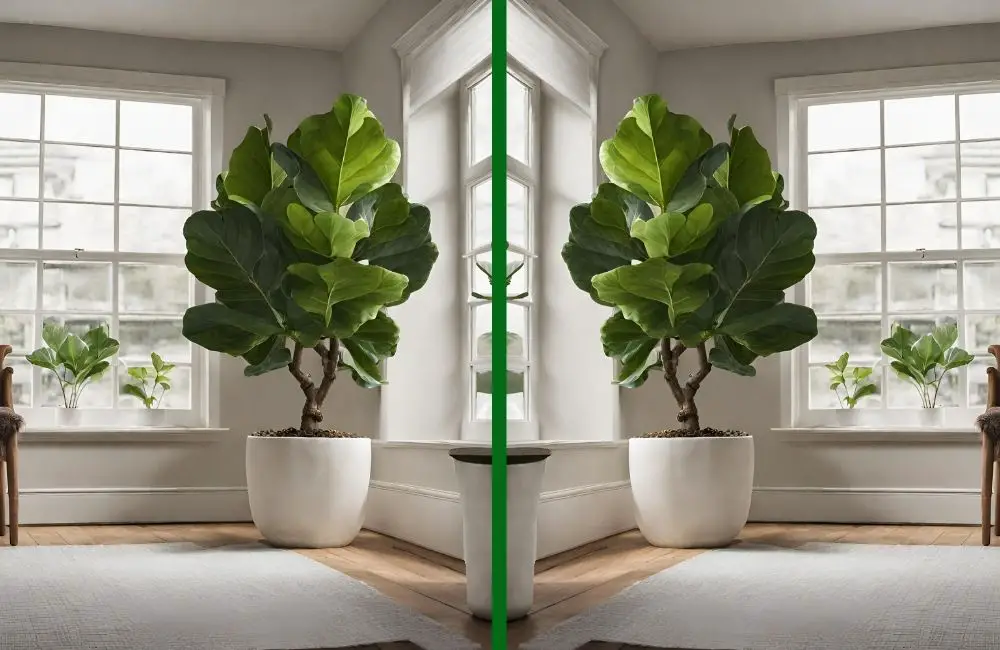
Fiddle Leaf Figs have a natural tendency to grow towards the light source. Rotating the plant regularly is crucial to combat this and promote symmetrical growth. A quarter turn every two to three weeks is generally sufficient. This rotation ensures that all parts of the plant get their turn facing the light source, leading to a more balanced and aesthetically pleasing shape.
The rotation schedule can also be an opportunity to check the overall health of your plant. It’s a good time to inspect for any signs of pests or diseases, remove any dead leaves, and assess the soil’s moisture level. These regular check-ins help you stay on top of your plant’s health and address any issues promptly.
3. Supplement Natural Light with Artificial Options
In low-light environments, using full-spectrum LED grow lights a few feet above your Fiddle Leaf Fig can effectively supplement natural sunlight, which is especially beneficial during darker months.
If your living space doesn’t receive sufficient natural light, don’t worry – artificial lighting can fill the gap effectively. Full-spectrum LED grow lights are ideal for indoor plants like the Fiddle Leaf Fig. These lights mimic the spectrum of natural sunlight, providing the necessary wavelengths for photosynthesis and healthy growth. Position the light about 18-24 inches above the plant, ensuring it covers the entire canopy.

The duration of artificial light exposure is also crucial. Typically, providing 12-14 hours of light daily is sufficient, but you can adjust this based on how your plant responds. Watch for signs of improvement in growth and leaf color, and adjust the duration or intensity of the light as needed.
Remember, the goal is to complement the natural light, not replace it entirely. Even with artificial light, try to position your plant where it can receive some natural sunlight during the day.
4. Recognize and Address Light Starvation
Look for signs of light starvation in your Fiddle Leaf Fig, like a leaning towards light, sparse growth, or lack of new leaves. Address this by adjusting plant position or adding artificial light.

Fiddle Leaf Figs communicate their needs quite clearly through their appearance. Light starvation is one of the common issues, especially in indoor environments. If your plant is leaning significantly toward the light source, it clearly shows it’s not receiving enough light. Similarly, sparse growth or the absence of new leaves can indicate a need for more light.
When you observe these signs, first try repositioning your plant closer to a natural light source. If this isn’t feasible or doesn’t resolve the issue, consider integrating artificial lighting, as discussed earlier. Rotating the plant regularly, even when using artificial light, is also a good idea to ensure balanced growth.
Regular monitoring and adjustments are key. By staying attuned to your Fiddle Leaf Fig’s needs and responding promptly, you can ensure it remains healthy and vibrant, even in less-than-ideal lighting conditions.
5. Adjust the Location with the Seasons
As seasons change, so does the light’s intensity and duration. Adjust your Fiddle Leaf Fig’s location for optimal light exposure, moving it closer to light sources or increasing artificial light during darker days.
Seasonal changes significantly affect the amount of natural light your indoor plants receive. In summer, when daylight hours are long, and the sun is high, your Fiddle Leaf Fig may enjoy basking in a spot with indirect but ample light. However, as autumn and winter approach, the shorter and darker days might necessitate a change in its position.
Moving your plant closer to windows or light sources can help compensate for decreased natural sunlight. However, be cautious of cold drafts or heat from radiators in winter, as these can harm your plant. If moving the plant isn’t enough, supplementing with artificial grow lights, as previously discussed, can ensure your Fiddle Leaf Fig continues to receive the light it needs to thrive.
6. Prune for Optimal Light Absorption
Regular pruning of your Fiddle Leaf Fig not only shapes it but also enhances light penetration to the foliage, promoting better health and vigorous growth.

Effective pruning is critical to caring for a Fiddle Leaf Fig. It’s not just about keeping the plant looking tidy; strategic pruning helps improve light absorption, which is vital for its growth. Trimming dense foliage, especially at the top of the plant, allows light to reach the inner and lower leaves more effectively.
Start by removing any dead or damaged leaves, as these can sap energy from the plant. Then, thin out areas where the leaves are particularly dense. This doesn’t just help with light absorption; it also improves air circulation, which benefits the plant’s overall health.
Pruning is best done in the growing season, typically in spring or early summer. This timing gives your plant a chance to recover and grow back stronger. Always use clean, sharp pruning shears to make clean cuts, which are less stressful for the plant and reduce the risk of disease.
Regularly adjusting your Fiddle Leaf Fig’s location with the changing seasons and maintaining it through strategic pruning are key practices that will keep your plant healthy, happy, and thriving, no matter the time of year.
Final Words
Ensuring proper light for your Fiddle Leaf Fig is a delicate balance of understanding its native habitat and adapting its care to your home environment.
By choosing the ideal spot, regularly rotating your plant, supplementing with artificial light when necessary, recognizing and addressing light starvation, adjusting its location with the changing seasons, and pruning for light efficiency, you can create the perfect conditions for your Fiddle Leaf Fig to thrive.
These practices, rooted in understanding the plant’s natural preferences and needs, will help you cultivate a healthy, vibrant Fiddle Leaf Fig, adding a touch of nature’s beauty to your indoor space.

